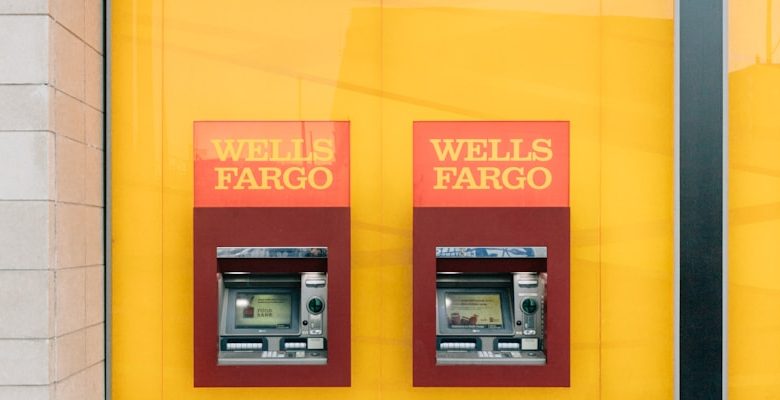How DeFi Is Disrupting Traditional Banking

- The Rise of Decentralized Finance (DeFi)
- Challenges Faced by Traditional Banks in the Era of DeFi
- The Impact of DeFi on Financial Inclusion
- Exploring the Innovation of DeFi Protocols
- Regulatory Concerns Surrounding DeFi
- The Future of Banking: DeFi’s Role in the Financial Landscape
The Rise of Decentralized Finance (DeFi)
The rise of decentralized finance (DeFi) has been a game-changer in the world of traditional banking. DeFi offers a new way of conducting financial transactions without the need for intermediaries like banks. Instead, DeFi relies on blockchain technology to create a decentralized network where users can lend, borrow, trade, and invest in digital assets directly with each other.
One of the key advantages of DeFi is its accessibility. Anyone with an internet connection can participate in DeFi, regardless of their location or financial status. This opens up a world of opportunities for individuals who may have been excluded from traditional banking services in the past.
Another benefit of DeFi is its transparency. All transactions on the blockchain are recorded and can be viewed by anyone, ensuring that there is no room for manipulation or fraud. This level of transparency is a stark contrast to the opacity of traditional banking systems.
Furthermore, DeFi offers users more control over their assets. With DeFi protocols, users hold the private keys to their digital wallets, meaning they have full ownership and control over their funds. This eliminates the need to rely on banks to safeguard their money.
Overall, the rise of DeFi is disrupting the traditional banking industry by providing a more inclusive, transparent, and user-controlled alternative. As DeFi continues to grow and evolve, it has the potential to revolutionize the way we think about finance and empower individuals to take control of their financial future.
Challenges Faced by Traditional Banks in the Era of DeFi
Traditional banks are facing numerous challenges in the era of Decentralized Finance (DeFi). The rise of DeFi platforms has posed a significant threat to the traditional banking system, forcing banks to adapt to the changing landscape or risk becoming obsolete. One of the main challenges that traditional banks face is the lack of transparency and trust in their operations. DeFi platforms operate on blockchain technology, which provides a high level of transparency and security, making it difficult for traditional banks to compete.
Another challenge for traditional banks is the high fees associated with their services. DeFi platforms offer lower fees and faster transaction times, making them more attractive to customers. This has put pressure on traditional banks to lower their fees and improve their services to remain competitive in the market. Additionally, the decentralized nature of DeFi platforms allows users to have more control over their funds, eliminating the need for intermediaries like traditional banks.
Furthermore, traditional banks are struggling to keep up with the innovation and speed of DeFi platforms. DeFi projects can be developed and deployed quickly, allowing them to adapt to changing market conditions faster than traditional banks. This has forced traditional banks to invest in new technologies and partnerships to stay relevant in the rapidly evolving financial landscape.
Overall, traditional banks are facing an uphill battle in the era of DeFi. To survive and thrive in this new environment, banks must embrace innovation, improve transparency, and offer competitive services to meet the changing demands of customers. Failure to do so could result in traditional banks losing their market share to DeFi platforms that are disrupting the industry.
The Impact of DeFi on Financial Inclusion
The impact of decentralized finance (DeFi) on financial inclusion has been profound, opening up a world of opportunities for individuals who were previously excluded from the traditional banking system. By leveraging blockchain technology, DeFi platforms offer a wide range of financial services without the need for intermediaries such as banks. This has the potential to provide access to banking services for millions of unbanked and underbanked individuals around the globe.
Exploring the Innovation of DeFi Protocols
One of the most fascinating aspects of decentralized finance (DeFi) is the constant innovation of protocols within this space. DeFi protocols are designed to provide a wide range of financial services without the need for traditional intermediaries like banks. This innovation is disrupting the way we think about banking and opening up new possibilities for individuals to manage their finances.
DeFi protocols operate on blockchain technology, which ensures transparency, security, and efficiency in financial transactions. These protocols allow users to lend, borrow, trade, and invest in various assets directly from their digital wallets. By eliminating the need for intermediaries, DeFi protocols reduce costs and increase accessibility to financial services for a global audience.
One of the key features of DeFi protocols is their interoperability, allowing different protocols to work together seamlessly. This interconnectedness creates a vibrant ecosystem where users can leverage multiple protocols to maximize their financial opportunities. The ability to stack different protocols on top of each other enables users to create custom financial solutions tailored to their specific needs.
Furthermore, DeFi protocols are constantly evolving and adapting to meet the changing demands of users. Developers are continuously experimenting with new ideas to improve the functionality and user experience of these protocols. From automated market makers to decentralized exchanges, the innovation in DeFi protocols is reshaping the landscape of traditional banking.
As DeFi protocols continue to push the boundaries of what is possible in the world of finance, it is clear that they are here to stay. The disruptive nature of these protocols challenges the status quo of traditional banking and empowers individuals to take control of their financial future. By exploring the innovation of DeFi protocols, we can gain a deeper understanding of the potential they hold for transforming the way we interact with money.
Regulatory Concerns Surrounding DeFi
One of the main challenges that decentralized finance (DeFi) faces is the regulatory concerns that traditional banking institutions have raised. As DeFi platforms operate without intermediaries like banks, regulators are worried about the potential risks associated with this new financial system.
There are several key areas of regulatory concern surrounding DeFi. One major issue is the lack of Know Your Customer (KYC) and Anti-Money Laundering (AML) procedures in many DeFi protocols. This raises concerns about the potential for DeFi platforms to be used for illicit activities such as money laundering and terrorist financing.
Another regulatory concern is the lack of consumer protection in DeFi. Unlike traditional banks, which are subject to strict regulations that protect consumers’ funds and personal information, DeFi platforms operate in a more decentralized and anonymous manner. This lack of consumer protection could leave users vulnerable to fraud and scams.
Additionally, regulators are concerned about the potential systemic risks that DeFi could pose to the broader financial system. As DeFi platforms continue to grow in popularity and scale, regulators worry that a major failure or hack in the DeFi ecosystem could have far-reaching consequences for the stability of the financial system.
In order to address these regulatory concerns, policymakers and regulators are exploring ways to bring DeFi platforms into the regulatory fold. This could involve implementing KYC and AML requirements for DeFi protocols, as well as establishing consumer protection measures to safeguard users’ funds and personal information.
Overall, while DeFi offers many exciting opportunities to disrupt traditional banking, it also presents significant regulatory challenges that must be addressed in order for the industry to reach its full potential. By working together with regulators and policymakers, the DeFi community can help ensure that this innovative financial system operates in a safe and secure manner for all users.
The Future of Banking: DeFi’s Role in the Financial Landscape
Decentralized Finance (DeFi) is transforming the financial landscape by offering a more accessible, transparent, and efficient alternative to traditional banking systems. DeFi allows users to access financial services without the need for intermediaries such as banks, enabling peer-to-peer transactions and smart contracts on blockchain platforms.
One of the key advantages of DeFi is its ability to provide financial services to the unbanked and underbanked populations around the world. By leveraging blockchain technology, DeFi platforms can offer services such as lending, borrowing, trading, and investing to anyone with an internet connection, regardless of their location or financial status.
Furthermore, DeFi is revolutionizing the way we think about banking by introducing new concepts such as liquidity mining, yield farming, and decentralized exchanges. These innovations are driving a shift towards a more inclusive and democratized financial system, where users have more control over their funds and can participate in the governance of the platforms they use.
As DeFi continues to gain traction and evolve, it is poised to play an increasingly important role in the future of banking. Traditional financial institutions are taking notice of this disruptive technology and exploring ways to incorporate DeFi principles into their own operations. This trend is expected to accelerate the adoption of DeFi and further blur the lines between traditional banking and decentralized finance.



